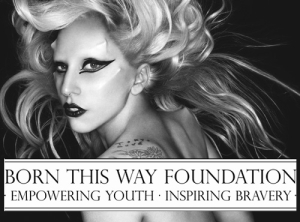Real Change in Philanthropy Requires Real Leadership
Have you heard about the Giving Pledge? Started by Warren Buffett and Bill and Melinda Gates in June 2010, it is an effort to inspire discussions about philanthropy and to increase overall giving in the United States. Their website describes the goal more fully and directly: The Giving Pledge is an effort to invite the wealthiest individuals and families in America to commit to giving the majority of their wealth to philanthropy. Whoa! Talk about going for the gold (or platinum….)!
Starting back in June 2010 with 40 signatories, The Giving Pledge now includes 81 billionaires (or mega-millionaires) including 12 recent pledgers like Arthur M. Blank (Home Depot), Edgar M. Bronfman (Seagram), and Elon Musk (PayPal, Tesla Motors, and SpaceX). Interestingly (some might say disappointingly) the pledge is a moral commitment as opposed to a legal contract and comes with few strings attached.
The 81 pledgers are a diverse group, ranging in age from 27 to 96. They represent 22 states and the District of Columbia, with the largest contingents from California and New York. They give to a wide variety of causes, including education, health, medical research, social services, the environment, and others. The pledgers are at different stages in their philanthropy – some have already given away the majority of their wealth, while some are just getting started. But they have all committed to giving the majority, with more than 30 pledgings even more in their Giving Pledge letter. You can read their fascinating and inspiring stories on the Giving Pledge website.
Of course, the whole idea of the Giving Pledge has not been without its critics. There are those who feel that there is no direction with respect to the Pledge, that no one has said what the Pledge is ultimately going to do, who it will serve and how it will be accountable. Others have suggested that it is merely a public relations gambit “like the pledgers are royalty.” For some, the fact that the pledge is a moral commitment as opposed to a legally binding contract is troubling.
And I ask “so what?”
Philanthropy has always been a skewed sector of the economy – after all, people make their giving choices based on their own passions, desires, likes, dislikes, knowledge and, in some cases, ignorance. From one donor’s viewpoint, I would say that I want to direct my own giving to the areas about which I am most passionate, specifically, quality public higher education. (full disclosure: I am the President of the Binghamton University Alumni Association and sit on the board of the University’s foundation.) Because of this, I tend to direct a large portion of my personal giving dollars in this direction. My sister, on the other hand, feels very strongly about supporting animal rights organizations and gives accordingly. Is there anything about my causes that are intrinsically better than my sister’s? No, not at all, particularly when viewed in a completely objective manner. But to me, or my sister, or other donors – or anyone subscribing to the Giving Pledge for that matter – any giving decisions are value judgments on each of our parts. The decisions are personal and they are valid. The sum total of these decisions represents a form of philanthropic market that is neither government-controlled nor societally-dictated. For want of a better term, let’s call it the “marketplace of philanthropic impulses.” This marketplace has existed ever since the first proto-human lent a helping hand to a weaker being and it will continue long after all of us are gone. While there will be temporary dislocations in the market when resources do no flow in the most efficient way, I believe that over time these dislocations will work themselves out as philanthropists determine the best place to invest their charitable giving dollars.
In the case of the Giving Pledge, Buffett and Gates do not provide the answers, but they do provide leadership to a crucial sector of the so-called “1%” who can afford to give big and make a difference in the world. You and I may not agree with some of the directions that these folks are taking, but as a friend of mine likes to say, “that’s why Baskin Robbins makes 31 flavors.”
Besides, when we view charitable giving in the light of the harsh reality of government cutbacks and overall scarce resources, isn’t any increase to be celebrated?


